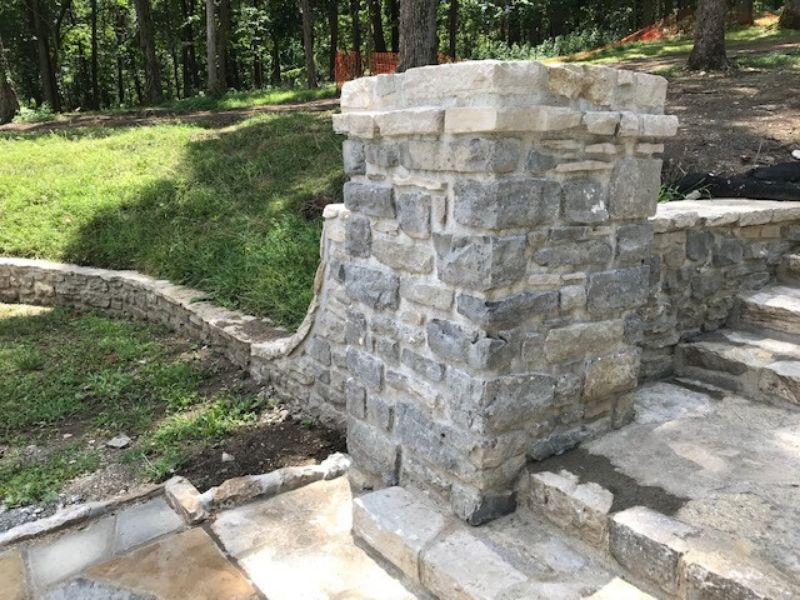Why not Fix the Asymmetrical Steps and Other Oddities in the Restoration?
Most historic renovation projects strive to retain the design, workmanship, and materials of the original structure. Over time, the original construction efforts and subsequent renovations tell the story, mapping out the history of a long standing structure. Even some imperfections have their place in recording past activity, not unlike how scars and age-lines can tell the story of a person’s life. In the case of the Allée, they offer evidence and clues for park visitors and historians to discover and learn about the life of an iconic feature in the Warner Parks.
When the Allée was constructed circa 1936, the stonework was likely done by multiple masonry crews led by different supervisors over many years. This would explain why the appearance and quality of workmanship varies as one ascends from the flagpole to the upper elevations – asymmetrical in design and inconsistent in materials. There have also been a number of repairs and interventions over the decades to address deterioration and the ravages of time. Metro Parks masons, for example, had to completely rebuild the failing stone retainer wall on the low side of the asphalt road in the early 1980’s. In the early 2000’s, Noland Stonemasons made significant repairs to the entirety of the Allee with funds raised by Friends of Warner Parks.
So too are materials preserved and re-used as much as possible throughout the restoration process. Much of the original limestone and bluestone were re-used, though a few exceptions are also made – with oversight and approval by the Metro Historical Commission. Sandstone pavers are now in place for the walkway and flagpole plaza surface, providing safer footing for pedestrians and improved control of erosion.
We can only wonder how park visitors in the future will look back to the year 2020 and remember how the It’s My Nature Capital Campaign made possible the largest and most comprehensive restoration of the Allée since being built in 1936. Surely, by that time, they will have many additional stories to tell!


